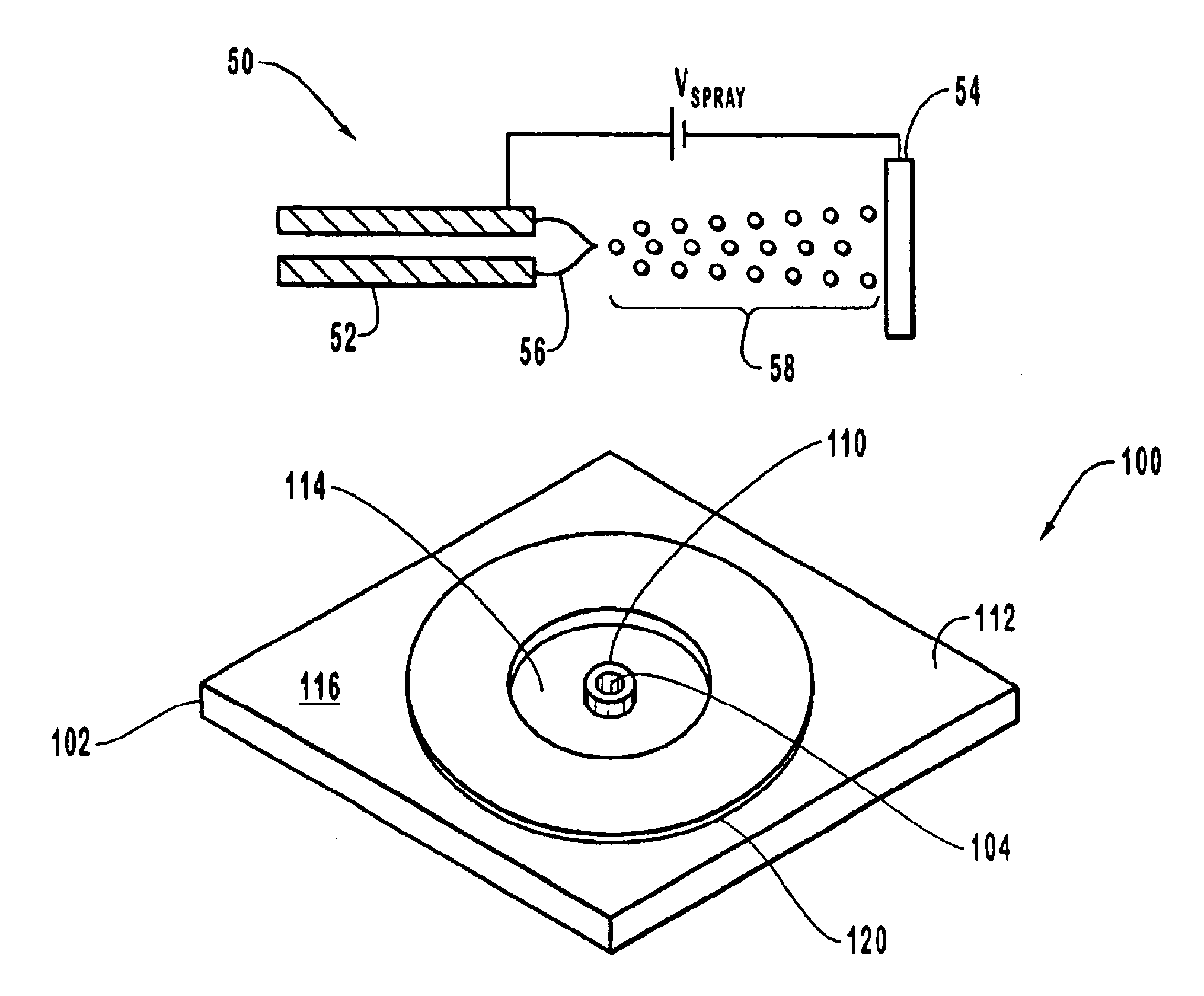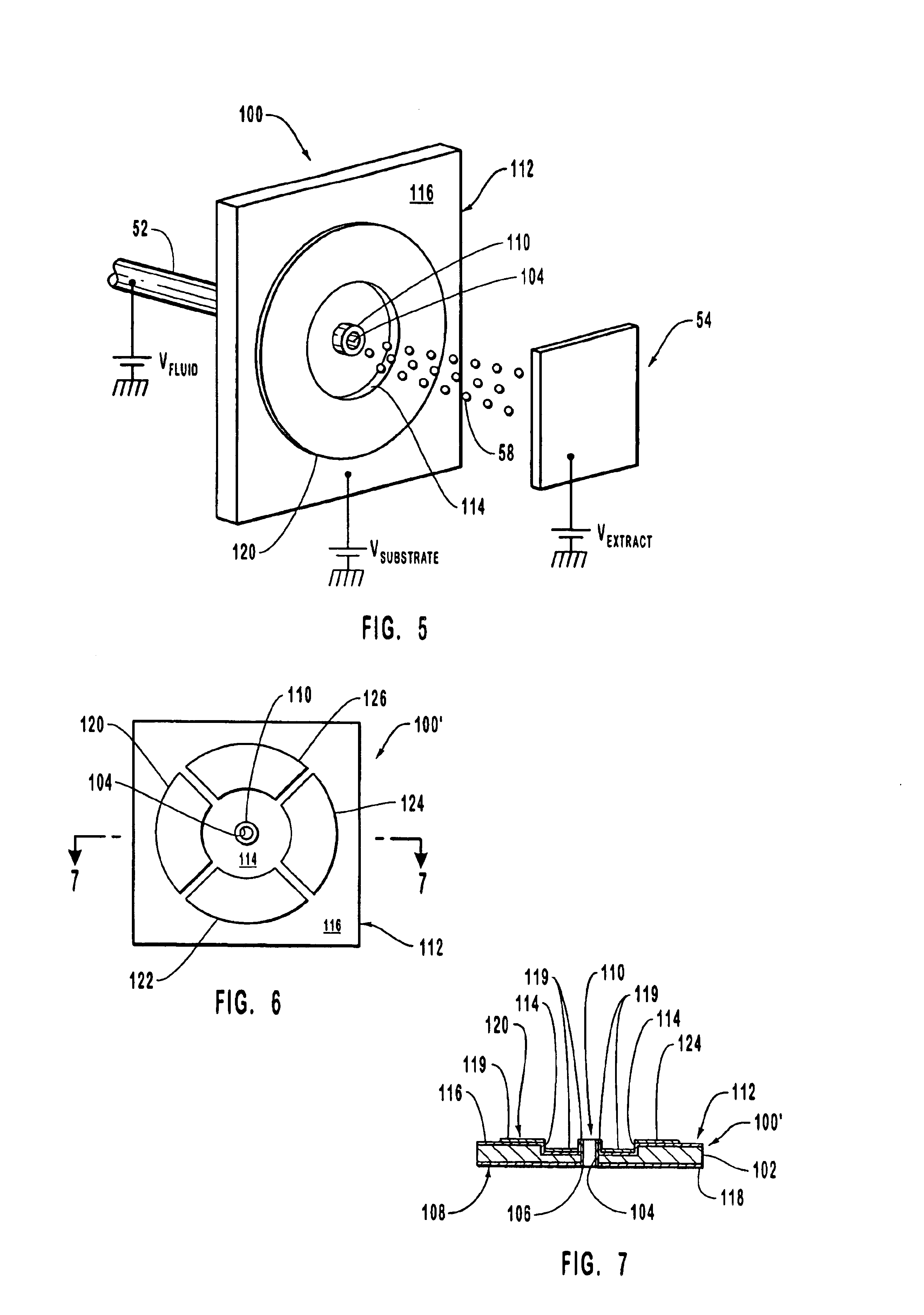Electrospray nozzle and monolithic substrate
a monolithic substrate and electrospray technology, applied in magnetic recording, particle separator tubes, record information storage, etc., can solve the problems of undoing the separation of the separation channel, unable to know the identity of the peptide, and difficult to determine which compounds are present in certain portions of the combinatorial library, etc., to achieve the effect of greater analysis throughput and utilization
- Summary
- Abstract
- Description
- Claims
- Application Information
AI Technical Summary
Benefits of technology
Problems solved by technology
Method used
Image
Examples
Embodiment Construction
An aspect of the present invention provides a silicon microchip-based electrospray device for producing electrospray ionization of a liquid sample. The electrospray device may be interfaced downstream to an atmospheric pressure ionization mass spectrometer (API-MS) for analysis of the electrosprayed fluid. Another aspect of the invention is an integrated miniaturized liquid phase separation device, which may have, for example, glass, plastic or silicon substrates integral with the electrospray device. The descriptions that follow present the invention in the context of a liquid chromatograph separation device. However, it will be readily recognized that equivalent devices can be made that utilize other microchip-based separation devices. The following description is presented to enable any person skilled in the art to make and use the invention. Descriptions of specific applications are provided only as examples. Various modifications to the preferred embodiment will be readily appa...
PUM
| Property | Measurement | Unit |
|---|---|---|
| cross-sectional area | aaaaa | aaaaa |
| inner diameter | aaaaa | aaaaa |
| electric field | aaaaa | aaaaa |
Abstract
Description
Claims
Application Information
 Login to View More
Login to View More - R&D
- Intellectual Property
- Life Sciences
- Materials
- Tech Scout
- Unparalleled Data Quality
- Higher Quality Content
- 60% Fewer Hallucinations
Browse by: Latest US Patents, China's latest patents, Technical Efficacy Thesaurus, Application Domain, Technology Topic, Popular Technical Reports.
© 2025 PatSnap. All rights reserved.Legal|Privacy policy|Modern Slavery Act Transparency Statement|Sitemap|About US| Contact US: help@patsnap.com



